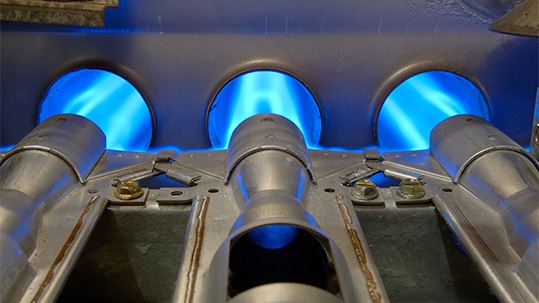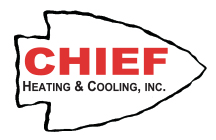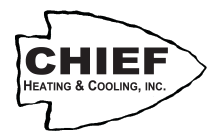
22 Feb How to Avoid and Fix the Most Common Furnace Problems
Sub-zero temperatures have been particularly brutal for people and furnaces across Lee’s Summit and the KC metro this month. Chief Heating & Cooling’s HVAC technicians have been working long hours, helping keep our commercial and residential customers warm when their furnaces break down or aren’t working as well as they should.
A furnace can need service, repair or replacement for many reasons. Let’s run through the most common furnace problems our technicians see so you know how to avoid them, and understand when you can make a quick fix and when it’s time to call in a trusted furnace expert.
These Furnace Problems Require a Service Call
Electric ignition or pilot light
A problem with your furnace’s electric ignition or pilot light makes it difficult for the furnace to heat your space to a comfortable temperature. You’ll feel colder than usual because the furnace can’t ignite and blow warm air through the vents. If you feel comfortable relighting your pilot light, try that. If that doesn’t solve the problem or you’re uneasy putting a lighter to your pilot light, contact Chief Heating & Cooling to schedule a service appointment.
Malfunctioning thermostat
A malfunctioning thermostat can result in problems with the fan or maintaining consistent temperatures. The thermostat tells the furnace when to kick on and off based on a programmed schedule or desired temperature setting. Home and business owners usually sigh in relief when it’s a thermostat issue compared to the furnace, since the fix can be as easy as replacing the unit.
The furnace isn’t heating air at all
When cold air is blowing through your vents, it could indicate one or more problems involving the thermostat setting, power, gas or the pilot light.
The furnace isn’t heating air well enough
Lukewarm air blowing through vents could mean your air filter is clogged or your furnace is simply too small to generate and circulate enough heat for the size of your home or business. If it’s the latter, then replacement with the right-sized unit is the solution.
Frequent cycling (constantly turning on and off)
If your furnace is turning on and off more often than usual, your filter might be clogged (so the furnace isn’t getting enough air) or your thermostat is acting up (see above).
The blower never shuts off
Your limit switch is an obvious culprit behind a blower that isn’t cycling off. It may not always be the case, but it’s a good place for your HVAC technician to start problem solving.
The furnace is noisy, as in a scary, unusual amount of noise
Eventually, you become used to the noises your HVAC makes. So, any unusual rumbles, squeaks, rattles and booms are unsettling and can be warnings of serious mechanical problems, reduced airflow or clogged burners.
Quick Fixes and Preventable Furnace Problems
Change the air filter
Change your air filter monthly. It’s the best piece of advice any good HVAC technician can and will give you. For something so cheap and easy to do, changing your air filter helps avoid so many problems.
A dirty or clogged air filter:
- Reduces airflow, making a furnace work harder to circulate air
- In some cases, may damage the limit switch that controls the fan
- Makes your furnace less efficient
- Drives up your utility bills
- Leaves more dust on your furniture
How to Help Avoid the Most Serious Furnace Problems
Make spring and fall maintenance a thing
The reality is that HVAC systems in our area get a break for a few weeks a year—those wonderful weeks when it’s pleasant enough to have the windows open or at least comfortable enough that your AC or furnace isn’t necessary.
The rest of the year, many HVAC systems are running. Remember, they are mechanical products and all mechanical things need service to continue operating. Make it a thing to schedule annual service for your furnace in the fall and your AC in the spring. Keeping these service appointments can help you avoid a serious breakdown at the worst possible time, like when it’s below zero for days on end. And, they can find and fix little issues before they become big, expensive repairs or replacement.
See what’s included in the Chief Protection Plan.

